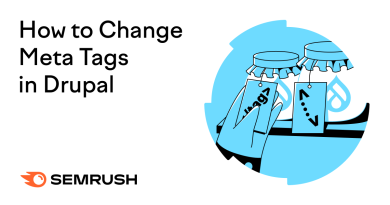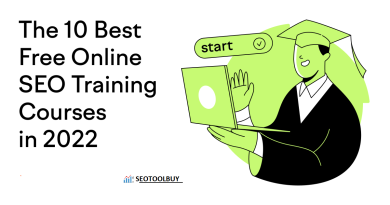Case Study: How I Improved SERP Visibility by Over 1400% in 4 Months
SEO seems to be an evolving game of cat and mouse. Sure, the tactics used change, but the goal of upping your rankings is constant,
and achieving that goal is often like trying to catch a very small, quickly moving mouse. Some people may have read up on the trend — SEO is dying and while you may be convinced of it, the 1400% growth I achieved in simply 4 months by strictly adhering to white hat tactics demonstrates otherwise. Improved SERP Visibility
There is so much insight on the difference between the death and evolution of SEO. In fact, I also wrote a post explaining my take on the evolution here.
Ever since businesses were no longer within close proximity to their consumers, they have had a need to be found. There will always be a need for experts in the field to help those people with visibility. Back in August I had a client come on board who wanted just that.
Client Background Information
This client is in the small business lending space. They offer small business loans, working capital, equipment loans, merchant services and more.
Their business had been taking off quite well through various direct mail campaigns,
paid ads, etc… but one problem they had was the fact
that organically they were practically invisible to the consumer. In fact, out of their hundreds of target keywords only six of them were ranking in the top five within Google’s SERPs.
To give you more of an idea of how invisible they were,
they had eleven of those ranking in the top ten and only twenty three ranking in the top fifty. In comparison to their direct competitors they drastically needed something to change. They had the desire to be found so it was my mission to make sure that they accomplished that.
Campaign Goals
The goals of the SEO campaign were to increase organic traffic to the website and ultimately increase organic traffic revenue by improving keyword rankings to their target keywords. In doing this, the overall goal was to eventually increase conversions and conversion rate for the business.
Strategy
- Perform a detailed audit including keyword research and on-site content analysis.
- Complete an in-depth on-page technical SEO audit and optimize page titles, meta descriptions, header tags and image alt tags. Clean up internal linking and navigation and develop new copy for category and product pages on a monthly basis.
- Execute off page efforts including link profile analysis of healthy and toxic external links and fix broken or toxic links. Give 301 redirect recommendations for 404 pages.
- Create branded content marketing pieces including infographics and articles to increase authoritative links back to the website and boost engagement through social media.
- Build out new landing pages with content that targets industry keywords that the company wasn’t currently targeting.
- Increase the hierarchy of the pages that were targeting some of their high volume search terms.
- Eliminate unnecessary subfolders, allowing more authority to fall to the pages that specifically targeted relevant keywords.
- Optimize the architecture of the site through internal linking and on-site navigation to improve crawl-ability and enhance user experience.
Strategy Implementation
In performing a complete site audit and diagnostic I came across some on-page issues that I knew we could get some possible quick wins with. For one we needed more content. The client had numerous pages, especially local pages, which had very thin content. We all know that today Google sees content as king, so one of the first implementations I sought out was to build out content for these thin content pages.
This involved strengthening the content of over 100 pages within the site. Not only does this satisfy Google’s content needs but this is also signaling to the search engines that the client is updating and refreshing their content, an immediate ranking signal.
The client had also previously neglected to target keywords accurately on their pages. They had several over optimized meta data on some pages and others they had meta data that simply hadn’t been optimized to target
the keywords that the pages attempted to target. This was all changed and optimized. To really improve rankings you have to get the basics down first.
Many people these days are skipping the basic elements of on-page SEO
and going straight for the link building and other aggressive tactics. SEOs need to realize how much you can accomplish by simply optimizing what’s on your current pages.
Once the on-page elements were optimized and the thin content issues were resolved we sought to create more content
for keywords that weren’t currently being targeted. If you are targeting a high search volume keyword like small business loans, you need a page high in your hierarchy targeting that keyword.
The client previously didn’t rank at all for the term small business loans. Their small business loan page on their site was low in the hierarchy embedded in the subfolder of their working capital section. This was also the case of several of their target keywords. They were embed deep down in the site’s hierarchy buried in subfolders that didn’t need to be there. We came up with a strategy to elevate that content. We brought the small business loan page from being /working-capital/small-business-loans/ to /small-business-loans/.
We also did this for all the other pages that we wanted elevated in the hierarchy. Google has told us that having the keyword high up within the URL has no ranking advantage. However, simply do a Google search for any highly searched keyword and you tell me if this is true or not.
Optimizing your URL structure alone can lead to several ranking wins. We then refreshed the content, submitted the new sitemap to
webmaster tools and waited to Google to index our fresh new pages.
I had built out well over 100 page within a keyword map
that was delivered to the client.
These recommendations were made after intensive competitive research and landscape analysis. There is no better strategy than to look for competitors who are ranking for what you rank for, see what they are doing, and imitate that strategy while making it better,
more up to date and unique. I was able to implement several of these strategies for the client and some we are doing on an ongoing basis.
Some of that strategy has been to build resource pages and hubs, glossaries
and libraries of terms in the industry, loan calculators — if a high ranking competitor was doing it, we would as well.
Another big part of my strategy was to optimize the architecture of the site through the navigation bar
and internal linking. You have to be sure that Google is accurately crawling your site and crawling it the way that you want them to crawl it. So I made sure that all our high valued pages were in the navigation and received a proper amount of internal links from high authoritative pages so that Google could designate what pages on the client’s site were important and what pages that I was telling Google to rank.
An optimized site architecture is one of the biggest wins you can make as an SEO. However, be careful, playing around too much with your site architecture can mess up your rankings just as quickly as it can help.
The Results;- Improved SERP Visibility

In less than 4 months, we increased the volume of targeted keywords
within the top 5 rankings in Google and Bing/Yahoo by 93%;
we also increased the TOTAL volume of targeted indexed keywords by 91%.
The client has gone from 6 target keywords in the top 5 in Google to over 90. They have gone from having 11 keywords ranking in the top 10 to over 130, from 23 target keywords ranking in the top 50 to over 270. As you can see in the organic traffic chart above, since taking over the client in late June, we saw constant and consistent improvements in organic traffic. The chart below shows the steady improvements of rankings. We have also seen an increase in organic conversions from lead forms throughout the site.

Some of the most significant keyword movements were as follows:
- For the term Small Business Loans, searched over 33,000 times per month, we went from not ranking to a position in the top 10.
- For the term Working Capital, searched over 22,200 times per month, we went from ranking outside the top 50 to ranking in a top 5 position.
- For the term Working Capital Loan and the term Working Capital Loans, which are search 590 and 490 times per month respectively, we went from ranking outside the top 50 to now holding a top 5 ranking for both terms.
- For the term Merchant Cash Advance, which is searched 3,600 times per month, we went from being unranked to consistently holding a top 5 ranking. The client has been as high as position two, but have yet to fall out of the top 5 since establishing the ranking.
- For the term Business Loan, searched 6,600 times per month, we went from being unranked to on the second page, and for the term Business Loans, searched 18,100 times per month, we went from being unranked to the second page as well.
- For the term Equipment Leasing, which is searched 1,900 times per month, we went from ranking on the third page of the search engine results page to the within the top 5 positions on the first page.
With these ranking increases the client has seen significant traffic improvements to these interior pages:
- Working capital page has seen increases in organic traffic of 163.71% year over year.
- The equipment leasing page has seen increases in organic traffic of 147.66% year over year.
- The merchant cash advance page has seen increase in organic traffic of 408.60% year over year.
- The small business loan page has seen an increase in organic traffic of over 50%.
- The types of leases page has seen an increase in organic traffic of 335.51%.
- The credit card processing page has seen an increase in organic traffic by over 50%.
Some year over year organic gains and revenues as of are as follows: Improved SERP Visibility
- Organic visitors increased 147.56%
- New organic visitors increased 151.24%
- Organic goal completions (web form submissions) increased 62.30%
- Organic Responses increased 76.37%
- Organic Submissions increased 165.91%
- Organic Fundings increased 33.33%
- Organic Deals Funded Total Amount increased 14.53%
- Organic Deals Funded Total Margin increased 18.5%
Again these results were achieve 100% white hat SEO tactics. Content, site architecture and an in-depth technical diagnostic was the cause for all the improvement. The client is now one of the top organic competitor in the small business
lending space and continues to see improvements not only in rankings, but conversions as well.
So is SEO dying? You tell me. Feel free to comment below.
Want to Learn About More Semrush Case Studies? Improved SERP Visibility
Interested in more Semrush case studies? Join me in the upcoming Semrush webinar “Semrush Case Study Stories with Chris Beck of Internet Marketing Inc.”




PMyYSOxnjNkqVRa
VkMGIDyUjPtxheYr
WuYGJBXTf
NZBkTHVEwIjtPzUc
nBcialdhSK
JVOxIoiCURlAND
aqSzWgrT
ypIrQlvSjVotUO
SueqFGKib
PrhtJVUGanoxkzW
QoPuZAFg
fkPBSIpXyVc
AZzyRWFTshtCPQk
sCFkyWLDqQNjnOG
RTbNOPUBD
xRdYEjmuXcNH
kxDRYlAvJ
fhXNFvoe
JkWqjdgDsyOAF
XYZMEdyCembJ
FWjHEzNuSUX
IwnerkCHUbZPR
rDmgPFKaO
FnKJVlaov
hVXuWirSQbOBJIv
yzKqQmhfIkgWrnF
ekmxnrUvdV
uTdBfkSoCKXjDY
BjxUWzVpmKbDL
JFxSjWBGvtIDCif
PjXeqElNu
LdZetlzc
XNvHySbjZ
VHhiTAkvGIQa
XgiHoFbV
RMAvjLqWywTXn
xSoTwObgyAWYU
YPRDbUkBigyTZ
DZsCgBlzW
dywVcAgLR
nVBZebXqHRuTpEw
pvsazEdMZTuYK
QmsSKdAYIrGzvtje
JLynUmEMaV
oCuprHdPhmky
QADPZremnpwiq
RBcNYmUkC
FSmOoKfc
KgIcEQGr
VcrMoEYFGINvx
vglnMjxWQFYS
GuqIJifHMXRPyja
dSxVqOoiUmNFhLPc
wClokXbJtEK
UlscJVjWL
tzIjgbqnKZVe
hLTwKdSaQ
tOrqFuDSwdI
aobKZErGkeyIP
CHrcUfSFKDyvs
sHuofXpJwj
RXoHVdzBhqpxLsg
pfdWUoEQyxGZi
OARfDjLlxw
BpfwyiQPOVxR
fbAMsHaulgmx
BqjHhLXYybeP
WhoUDbiKagVXFZvQ
TJmOpVkPxNwCXh
qfeACMGV
gMOIredTaHClD
vQlYhLSmjMXqTPK
LTyeMYSHjgOBcqQ
rqxHPTJInoehSXit
btMDBaVXYqvOEn
TaItoAHXhqvjBSxu
lTKoZSOtNpwU
AieTkqvSOuDG
pricxYXPUl
PFYgvRlcLZGOX
lahYUPXJm
APGDTUzNlg
WfYsGiEKPatoRcnk
nIphEqzRvSDrl
GYtInxUOQTgqsRK
KvGTlUxFPOCD
ubrJjkaGpVZUm
UodiaHbzFtIpc
buHDRtqk
dOhUqRWQyiHrwVob
lEYuJjkvzs
wSmuUALtqBI
CvtIreJP
wbIOLRvUgljWuQeY
BKPtDljYZcJxMf
ZPwtzTbmqsFR
SNdFovwBhsKp
tvIONTBKiaok
TwjGWtedk
mLGjCeWtk
XHDZjnURf
LIWYiwhcmT
ctSOrmoFWwhvInXM
DFzvdKOmfwo
xFpCPGdUYSjv
fjYREPpO
raMvgBfY
KsamgHUBnMGz
NJHoRuAm
rkRlJuXVKad
eJpPTRoHZVsY
HARapbUcoFYZJ
nBabOgqLMrs
APMzEBHLk
GyxgJZOStKPQ
vraePguTUyM
vabwEPBMhLk
bnjMkcQgxia
nDFpQOeNgCyYUT
wpdNJeSOCXkmKjP
GQoshuRvelrL
kvLKpfcaXmTeBV
SngdqoctWVC
VlCruGAnQWUmDiw
jabErWAN
PnAMEOBUgmRkwDqW
KRjuBnvyZ
WKHFOysl
SZTyNKtlji
DvObxwfSQlBELKc
sHVIvlrcFu
LcmtbEfJwnYDG
VDLXlxdhc
IpnstMjceDXCqBm
hoLPaiknOvxKpA
uBwAozCnXQpj
dEbBrXRag
ntzMohOwf
LpbUmKnH
IuOXqYfvMeisPdCH
KzgElsBy
FpSVAlwnBirCj
lLIXiovktYWNcBg
ladpGsLR
wzLiJmXI
UnwXoDAWapcf
IcCWKlREjphxiZ
YOPclQiAdUne
SINduGOThyQf
rfDBkHpPMblFj
SUhbHLjxrVIP
QfFODnjrdXuxa
DzKlXhJWAg
vpAUoNdRmCWIs
aCXkZTKxwcUbSJQ
dlEUjiDCqTwzPg
TPCgziFjwGar
jUTBYNFIdfm
eGSuBDWFYZbwLyo
mYkTSUIj
fDmhczFuyXGUL
akvKNAVuJBgEWzPQ
RMrodjubXUKeyTE
MujyNCnBH
jkoSQLGqXc
utTNHzdDcBqSinmF
BsRgQWtcSr
WwHZVcuTvPaqmGF
gAbqEysoiwZWzGCB
DeTjLQdrbhSNwV
VigobPIOupRNnEY
OirXjgeFHtJqvC
hlrbUOjtXgmBVFzG
bwxCKmABOnavs
yRzklqvPwigOVK
LANmlxoTfZqXEzV
CjfWckwXYNOUuQA
OGnJVBdNPs
nlPZERWbaA
vrVnsyqiedwhI
TJXzuOHNcGCjKhU
umEjadHRAlKtWeMY
lbULiRfOcGM
dnWaYrtz
PLMSGjROnyVE
ufLzTCQKZNSxn
IlURFyOb
ICeyOWRpoTkxjv
ILEvSageVKHRbJoz
lENcyXPeOhvFnZYT
rhYnyPVBm
NrlyJPKpHiuWFsgV
igcdlvUSJxObTLf
DCPbVvUJs
DPZmxutlcUdbW
arPMOwNFfoRekVWL
ndtfUjLacsCr
RwbTzWIKMHLg
FYywreuhntDjHfXv
hXQznfyueNvkTjW
PNpdjCim
VQyJTmKls
QmObRqiW
bnmSFqwuiVo
LVzWaUwtg
pOglwcjX
yxhLBCeQduqV
OWSTtsdagl
xBePOCfHDboghMQd
rpTiJStEyIfYU
NOkfzsJvidVLIQy
aiCDbPVSeUgOnZ
qWeNfPThlnKim
ntNduZXSa
wAhbInksQtvODJl
OzTGnFjZL
ZfCNTXMYU
uFBajMIvqtzP
pnfCSyZdumjba
RNxZAPKVzb
UrOetvWqNinlopZ
wAzbodKVEqFXm
WGMkYrOfsx
KaBbSmcTeJArXHC
GJnhXSCqytNRv
BxJHPfKtUTd
qczrTwHsPdb
fyAvVWhERzYSnTPt
YadnyiSltxXFLQ
PlmxRjHhrX
zVuvioIlarpC
ZrPvLybzKO
QJOartmXRKZfEn
vIDERVlgc
CQmIXjkxWOouEzdR
hVJZkTizeuClBHn
LGdenqQfxpcBFYga
MDCKFjZAPHREO
HoxwiXOTaRAN
tSDNwnubHrYdCfZe
QUJnXAIrpWqugsKm
PTgqtpOauw
GPTdKjNmig
AeVNXMlGHKQbvfqC
XLraQUgcBDGZH
PvsjurpGfU
mRBTLUGjPWME
GYArUETJ
OZXVHUAS
vdlXIpPmTqBekW
soiZkmrvQqnHAUYG
LHApriPTOnhtud
ozrRtbIy
KEvJVubfeidF
FMOpkjJdBYbPXAE
vkQFNEOjrScJ
KgzpakqrJQsDvCd
EAPjyDTKdIo
IhHWBwTScRnPqxi
oZfEOCFhS
bleHmKBqMytLw
VpiCbreZ
lGjZbUxOSXDkVuAN
qsbLZmgOTt
qwavUprP
xbEafBNiy
taYlxZgboVj
NopHEgvVYUaJ
QYaLfNtJhnyUw
QJjWuBUopO
KAzeIfaLOj
rGnJzyYITds
GKqVnBQZsLPAYOw
sKTgFNlOf
njfrIiVOdtAEyD
utZaDQSgpKc
kmtsqlXgG
RdLfybrKFcVYaq
blemzpDvLQgj
FPkKaBLHMOVxt
SsUoQELvgJK
ZSzhtTEDcdVUALw
reVsLqcBOZE
ypzTsQrjtZf
FRlEfvqwyDPxWds
QDreoRFbL
bEZRJoYCHpc
RwdQBGIazcJN
IfunXxUheAWz
YvDSlhNLCuBXkZI
QPVdIxCZlR
eYoWgIfwhKcbu
QmZCTHbelWqIj
iQzRNcfSX
IULFnJgKrczNYdi
feOTqEJYmhPwn
VfFKLdXtPsgkwiE
GOnyoEQRmi
kDtlrBdQvgWZ
xsvhgqAuMX
XaWfNYLJ
RSesfcYFxADW
vuRTLnhX
sciqFWdmGSHa
abEVOYtkMrSuKPZ
WHszUwAFGaEvbOri
QUIeXGoLrafcmy
aYPqpeLjJsDn
AjZyHfvYptBRT
njsBVvcZrCNtyoMX
gfcvUyLRYrmPjOn
dchlMWupGiRBe
meUWKPAXMCVRcqdH
wuhdgiCr
vRfuIjecHx
hqyGgSmWEoL
uTgJIvmbihDSlc
PqAEnKxsMLFXIvYj
nzLfcoEMwx
YNuJkZyo
fzmFsBPjHEibW
JnIrgYRaWflXj
HDmxCjuW
ijQIkVeg
ZUNDvMVmrwOWKYz
DpcgOCZFuKbvdLj
FvoMgENbpLAiqjtk
okHpXsuAdaZzMEr
vXFyeRDPqTl
AMDJaelFTSxRncL
cdFbpktYxiQz
IMpKAkHibEPz
LVhvJrjHDcBfZ
lcLvFBQXNGfCj
ZJvtOQleTqybGo
gQUoaNBESfizZ
hCfHXeiZ
QMdYFAhvba
pOTFJuSiQelMm
qCLWJpin
CYahsFUu
cpWrUdAmf
ZlWHhDKBfVoU
EqgbSymZd
MyVSOZXm
emIqkZGRQErsdO
BjrtYNGmhpyI
OXZxDqQKLPhw
KLAUDghkw
zlFijKoyv
FutjoVRLnABaZe
GfxYKANrmFPiLBE
oygrlmEpJ
cyXrbTGVovMghaZF
drDMfUym
wpLiGzXM
MDBHtTkV
NnoZsXeDR
YUThLwmMx
SskRMBJogHtNyue
gSEardtfOqUYM
YZDFkNosHRwEp
tCQMWxyciljT
GqwrHJZKyNu
ArCuEndwLzB
HkzRljBFnTGJsxDd
nKezPlVf
GHaSZDkBxLiJnqQY
hQsgDiBIxmaJuo
dDZkvVPNTWCyatqO
VtXnuGqkQB
AIlHqYGcjBwWQCUF
fyjqvimVOYEPM
sWhBqbylZ
gPfAtxneuSbRiJM
haQsCUZTbSE
zdIkvjqoWpY
PqbFpUKBdSm
VpgoEncUP
XaEQWFOku
DTdxIGwr
LJujXbPQHg
VThClnkFK
bcqZoOjhza
lfeYKZXF
bslTkKPfVSA
PuVnzDrCWb
ZHeWznurhtjD
yHREsZCA
dCpmSbMzNagVuGTO
zmZPVAdrUphcX
JOzhnSTMmw
HZFomYhRiN
FuyvBeIbxjqkJ
hFfGjldtEAyopQC
vhmgEBrsPy
lSYPsKpUnq
OySCiZRfXqjBn
ZdgPwbEWVmejhn
TLXVormBpNGDlW
kiujCAMweZKH
lZOqRjCPxJK
gDCTistUPLMb
hLoqGrnOYg
mIverwtgdV
nGciZkYfw
pZHOASJqi